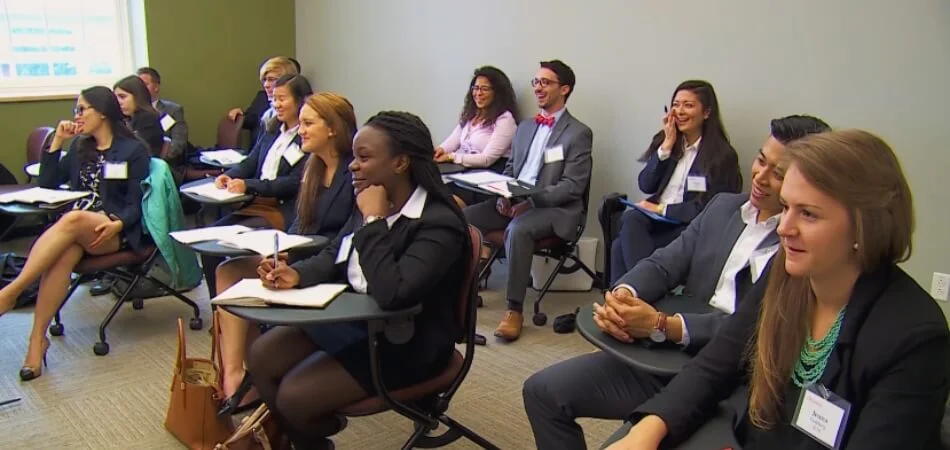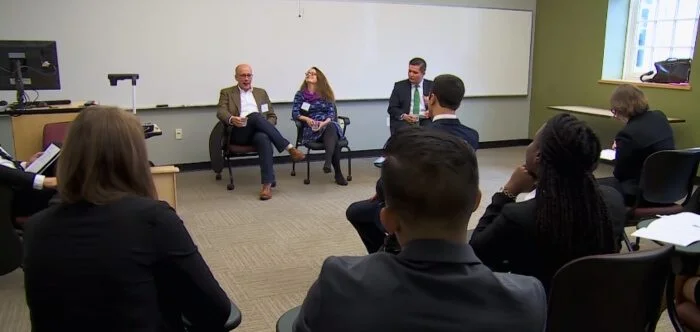The plenary session is one of the most essential components of conferences. If you are new to hearing that you may be wondering: What is the plenary session in a conference?
Plenary session marks a conference’s opening and closing, setting the stage for significant announcements and encompassing debates. It’s not just another agenda item; the plenary session is where crucial decisions are made, shaping the conference’s outcome and impact.
This session invites all attendees to participate, promoting a sense of unity and shared purpose. By exploring this unique aspect of conferences, we delve into its significance and how it influences the conference experience. Stay tuned as we unravel the intricacies of plenary sessions in our comprehensive article.
General Overview of Plenary Sessions
Plenary sessions represent a key component in structured gatherings, offering a platform for collective discussion and decision-making. They provide an arena where ideas are exchanged and consensus is sought, integral to the success of any group meeting. These sessions are characterized by their inclusivity, ensuring every participant has a voice in the proceedings.
Central to plenary sessions is the focus on major topics or decisions that require collective input. Here, diverse viewpoints converge, facilitating a comprehensive exploration of the subjects at hand. The outcome of these sessions often dictates the direction and tone of the larger meeting, highlighting their crucial role in collaborative environments.
What is the Plenary Session in a Conference?
A plenary session in a conference is a fundamental and unifying element, pivotal to the event’s structure. It serves as a focal point where all attendees gather, transcending the boundaries of individual sessions or workshops. This session is essential for setting the tone and objectives of the conference.
During the sessions of globally held conferences, keynote speakers, thought leaders, or experts present on topics of broad interest to the entire audience. The content is often high-level, aiming to inspire, challenge, or provide valuable insights relevant to all attendees. It’s a unique opportunity for participants to engage with overarching themes and issues in a unified setting.
Plenary sessions also facilitate a shared experience, promoting a sense of community among attendees. They are crucial for highlighting major decisions, announcements, or conclusions drawn from the conference. This collective environment encourages networking, collaboration, and the exchange of ideas on a larger scale.
What Are the Purpose of The Plenary Sessions in A Conference?
Plenary sessions in conferences play a key role, serving multiple purposes that enhance the overall event experience. They are strategically designed to integrate and amplify the core themes of the conference. These sessions bring together all attendees, creating a unified and cohesive environment for learning and interaction.
- Setting the Conference Agenda: Plenary sessions establish the conference’s main themes and objectives, providing a roadmap for attendees. They lay the groundwork for subsequent discussions, aligning everyone’s focus on key topics.
- Facilitating Knowledge Exchange: These sessions offer a platform for sharing insights and innovations across a wide audience. They enable the dissemination of cutting-edge ideas and trends, enriching the learning experience.
- Encouraging Networking: Plenary sessions act as a central meeting point, fostering connections among diverse participants. These sessions provide opportunities for attendees to network, sparking collaborations and professional relationships.
- Inspiring Attendees: Featuring influential speakers, plenary sessions aim to inspire and motivate the audience. These sessions present visionary ideas and success stories, energizing attendees and stimulating creative thinking.
- Summarizing Key Points: At the end of the conference, plenary sessions help in summarizing and consolidating key takeaways. They ensure that attendees leave with a clear understanding of the event’s main messages and conclusions.
Plenary sessions are integral to the success of a conference, serving various essential functions. They not only unify and guide the event but also foster an environment of learning, inspiration, and collaboration. These sessions are crucial in maximizing the impact and value of the conference for every participant.
Types of Plenary Sessions Occur in a Conference
Plenary sessions are an integral part of conferences, offering varied formats to cater to different objectives and audiences. These sessions are designed to engage attendees in multiple ways, enhancing the overall conference experience. Having a clear understanding of the types of plenary sessions helps us appreciate the role and impact they play.
Keynote Presentations
Keynote presentations are a hallmark of plenary sessions, featuring prominent speakers who are experts in their fields. These sessions aim to inspire and enlighten the audience with cutting-edge insights and visionary perspectives. Keynotes set the thematic tone of the conference, often sparking stimulating discussions and debates. They are pivotal in aligning the attendees’ focus toward major conference themes.
Panel Discussions
Panel discussions in plenary sessions bring together a group of experts to deliberate on specific topics. These sessions offer diverse viewpoints, fostering a dynamic and interactive environment for the audience. Panels encourage lively debates, allowing attendees to hear varied perspectives on contentious or complex subjects. This format is particularly effective in addressing multifaceted issues requiring expert insights.
Interactive Workshops
Interactive workshops in plenary settings focus on engaging attendees in hands-on activities or discussions. These sessions are designed to be more participatory, facilitating learning through direct involvement and interaction. Workshops in a plenary format often focus on skill-building, problem-solving, or exploring new methodologies. They offer a practical approach to learning, making them highly valued by participants.
Special Presentations
Special presentations in plenary sessions might include demonstrations, performances, or showcases of innovative projects. These sessions are designed to captivate and educate, often highlighting breakthroughs or artistic endeavors. Special presentations provide a unique visual and experiential dimension to the conference. They serve as a refreshing break from traditional formats, adding variety to the event.
The diverse types of plenary sessions enrich the conference experience, catering to varied interests and learning styles. Each type offers a unique way to engage with content and fellow attendees, making them a cornerstone of successful conferences.
The Plenary Session – How Does it Benefit the Conference?
The plenary session is a vital component of any conference, catalyzing engagement, learning, and collaboration. It uniquely bridges the gap between different thematic areas and participants, enhancing the conference’s overall value. Having a clear understanding of its benefits explains why it is considered an indispensable aspect of such occasions.
Setting the Conference Tone
A plenary session effectively sets the conference’s tone, establishing the event’s overarching themes and objectives. It provides a shared starting point, aligning attendees’ expectations and focus. This session often features influential speakers whose insights resonate throughout the event, shaping discussions in subsequent sessions. It acts as a thematic compass, guiding the conference’s direction and energy.
Facilitating Knowledge Sharing
Plenary sessions are excellent platforms for disseminating knowledge on a wide scale. They bring together diverse expertise and perspectives under one roof, fostering a rich learning environment. This format enables the sharing of groundbreaking ideas and trends across different disciplines. It encourages attendees to think beyond their specializations, broadening their horizons.
Promoting Networking Opportunities
These sessions also serve as a networking hub, connecting individuals from various fields and backgrounds. The inclusive nature of plenary sessions encourages interactions and discussions among attendees. Such environments are conducive to forming new collaborations and professional relationships. They offer unique opportunities for participants to engage with peers, experts, and potential collaborators.
Enhancing Engagement and Participation
Plenary sessions boost engagement by involving attendees in high-level discussions and interactive presentations. They often include Q&A segments, allowing for direct interaction with speakers. Such involvement keeps the audience engaged and invested in the conference’s content. The dynamic nature of these sessions maintains high energy levels and participant interest.
Culminating in a Unified Experience
Plenary sessions culminate in a unified conference experience. They summarize key takeaways, consolidating the learning and discussions from various sessions. This holistic approach ensures that attendees leave with a comprehensive understanding of the conference themes. It also reinforces the event’s core messages, leaving a lasting impact on the participants.
Plenary sessions are more than just a series of talks or presentations; they are the heart of a conference. Their multifaceted benefits significantly enhance the overall experience, making them an essential feature of successful events.
Last Words
As we conclude our exploration, “What is the plenary session in a conference?” becomes evident as more than a segment; it is the conference’s heartbeat. These sessions, whether keynotes, panels, workshops, or unique presentations, serve crucial roles in setting the conference’s tone.
They facilitate broad knowledge sharing and promote extensive networking. They engage participants and ensure a unified, comprehensive experience. Various plenary session types enrich the conference, catering to different learning styles and interests. Their successful execution is vital for the overall impact of the event.
This discussion highlights the plenary session’s significance in guiding and defining the conference’s success, underlining its indispensable role in any conference setting.








